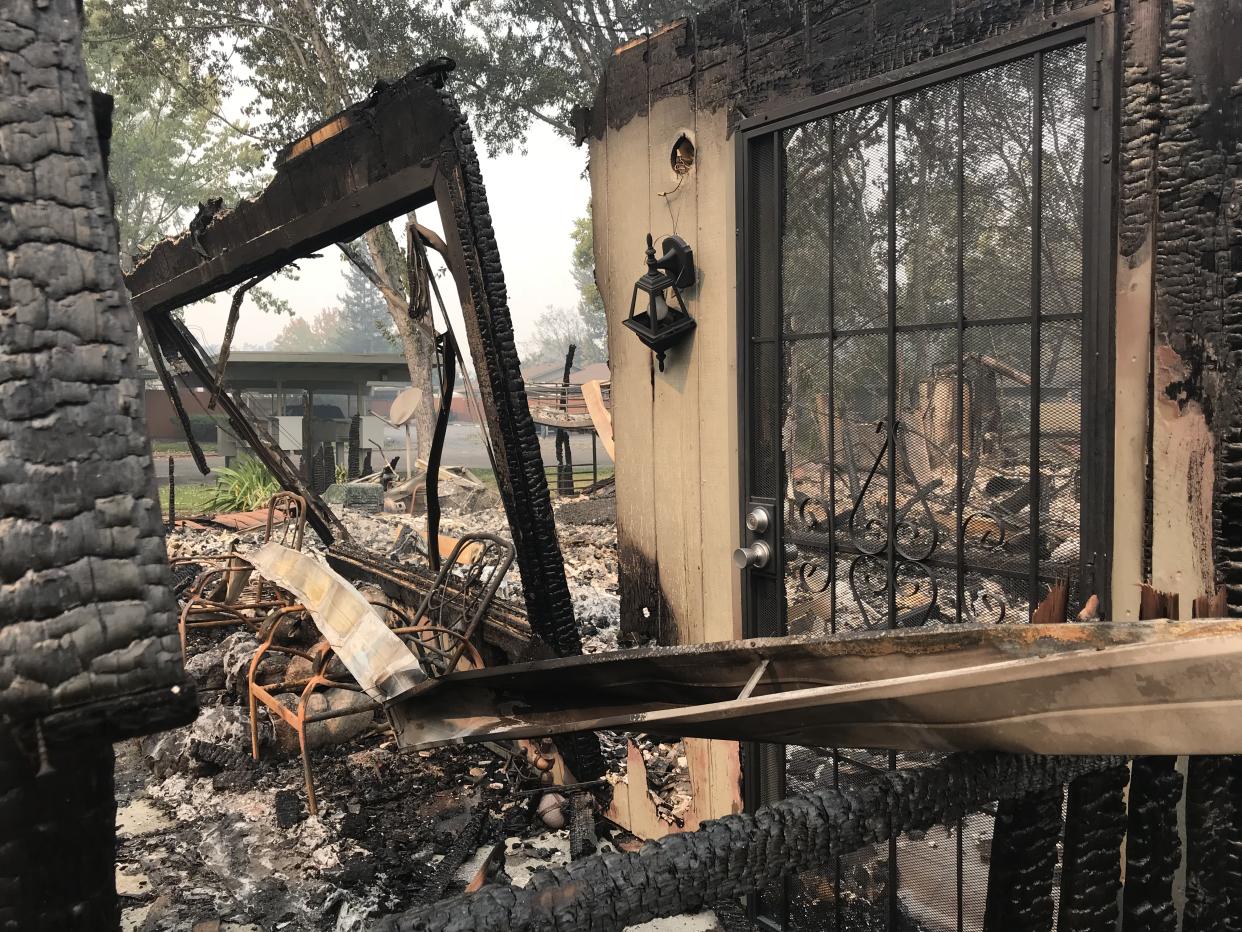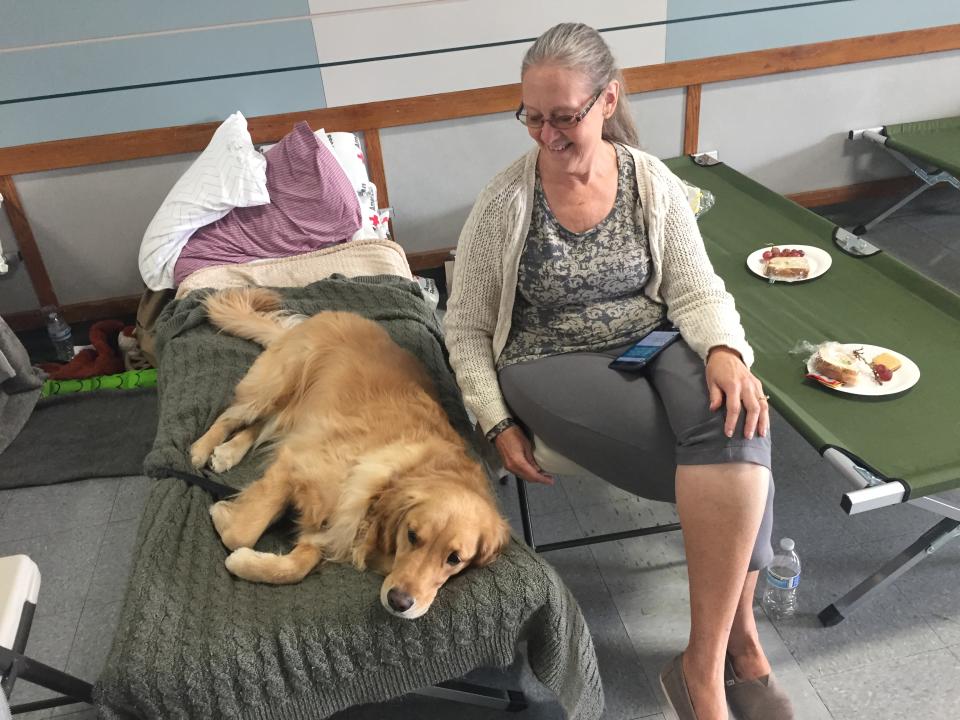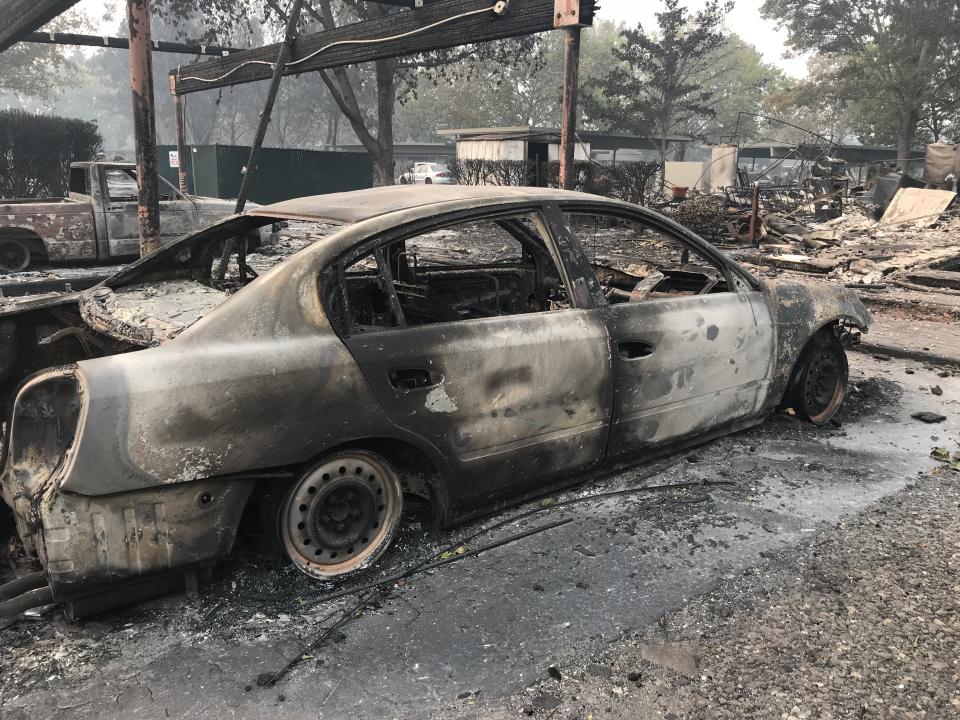The excruciating uncertainty of the California wildfires

SANTA ROSA, Calif. — Perhaps the only thing that’s certain for the roughly 175,000 residents of this wine-growing region being terrorized by devastating wildfires is that no one knows what’s going to happen next.
For 18-year-old Jack Thiebaud, an aspiring firefighter who just started his first semester at Santa Rosa Junior College, a tour of what’s left of the apartment complex where he had recently settled proved dumbfounding.
“Never in my life have I seen so much destruction,” said Thiebaud, who hiked back into the flattened neighborhood with his father on Tuesday. “It’s all gone.”
Fifteen of the 20 buildings in the Hoper Lane Apartments were razed, though the unit that housed Thiebaud’s one-bedroom apartment miraculously remains. With the area still designated an evacuation zone, and with no power or utility service, he has relocated to his parents’ home in Berkeley.
“I have no idea what they’re going to do. Maybe they’ll bulldoze the whole thing,” Thiebaud said. “But it could have been much, much worse for me.”
Slideshow: Wildfires destroy Northern California wineries >>>
Thanks to the unusually high winds in the region Sunday night, when the so-called Tubbs fire descended on Santa Rosa, Gry McFarland and her husband, David, decided to close their windows before going to sleep. Around 2 a.m., awoken by noises outside, he got up to see if the winds had died down.
“There was so much smoke when I opened the window, I was just shocked. Before I could really register anything, my doorbell was ringing and someone was knocking,” Gry McFarland, 60, said while sitting beside her golden retriever at a makeshift shelter at the Santa Rosa Fairgrounds. “Fifteen minutes after that my phone rang with a recording that said, ‘Evacuate now.’ No matter how calm you think you’ll be, everything just goes out the window.”

The McFarlands woke their houseguest, a woman who had traveled to California from Houston to escape Hurricane Harvey’s floods, and headed for the Veterans Memorial building.
“All we could see was red behind us, and I thought, ‘OK, it’s just all going to burn up.’ We were mentally preparing not to have anything to go back to,” Gry McFarland said.
The fire came within two blocks of her home before the wind changed direction, the blaze engulfing nearby stores like Lucky and Home Depot instead. But McFarland knows her good fortune might be temporary.
“They’re expecting the wind to come back up, and if that happens they could have to evacuate people all over again,” she said.
After a calmer day on Tuesday, the winds did indeed kick up on Wednesday afternoon, and were forecast to gust up to 40 miles per hour overnight, playing havoc with firefighting efforts. And despite those efforts since Sunday, containment of the Tubbs fire stands at just 3 percent, fire officials say, the same low number as containment for the Atlas Peak fire in nearby Napa.

Meanwhile, the number of deaths and destroyed properties continues to rise — 21 people have died and 3,500 buildings have been lost over the entire region as of Wednesday’s count. Thousands of firefighters, aided by a fast-growing number of California National Guard troops, are now fighting multiple blazes across the wine country, and the magnitude of the disaster has begun to sink in.
“We’ve had big fires in the past. This is one of the biggest, most serious,” California Gov. Jerry Brown said at a Wednesday press conference. “It’s not over. … We have people living in communities and cities and very developed situations that are close to forests and brush that becomes kindling.”
Slideshow: Deadly wildfires ravage Northern California, threaten wine country >>>
For Alicia Abarca, 35, the stress of uncertainty is taking its toll. Silver Star Care Home, the assisted-living facility where she worked, burned to the ground Monday. Now she has to wait to see whether her boss can figure out a plan to serve the dislocated seniors and keep his workers employed.
“We’ve got our stuff in the car just in case we have to leave,” Abarca said, accepting a sandwich from a Red Cross worker at the Santa Rosa Fairgrounds shelter. “We just spent our last money that we have on gas and food when we had to leave on Monday morning.”
While her husband has been able to keep working at his construction job, Abarca, who has lived in Santa Rosa for 28 years, waits for word from her employer about whether she’ll need to look for a new job.
“It’s just not normal,” Abarca said, looking up at the ocher-hued sky. “You’re used to thinking, ‘OK, we’re going to get paid. We’re going to pay our bills.’ Right now we’re struggling.”
If there’s a bright spot to be found, it’s in the unrelenting efforts of the firefighters who come to the area from across the state to work grueling 72-hour shifts and who have earned the admiration of the entire community.
“Seeing how the first responders did such an amazing job, it made me want to be one that much more,” Thiebaud said.
Read more from Yahoo News:


